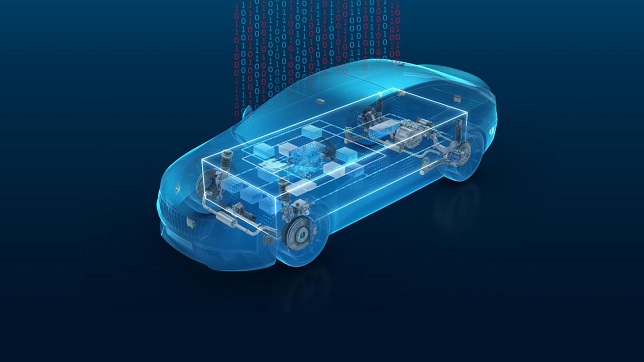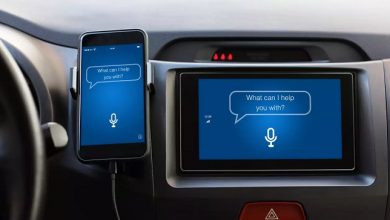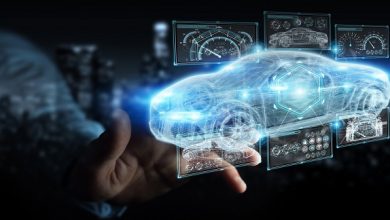Over-the-air (OTA) : A Differentiator for Software-Defined-Vehicles

An introduction to Software-Defined-Vehicles
Concept
The automotive industry has seen a major shift since the last decade. As the vehicles gradually transforms into E/E (electric/electronic), the experience of what is known as “Vehicle 4.0” becomes more and more evident. This is further characterized by the convergence of electrification, connected and autonomous emerging into enhanced experiences, new forms of mobility, strong alignment to environmental concerns, developing eco-system and underpinned by the demand for a digitally transformed enterprise. Developing such vehicle of the present and that of future, requires capabilities and partners to address the challenges of automotive software engineering. A vehicle whose design, manufacturing on one hand and features and functions on the other are primarily enabled through software, or software led hardware is termed as “Software Defined Vehicle”.
The Software-Defined-Vehicle has created an opportunity for manufacturers to mitigate risks and differentiate in the customer experiences space with brand loyalty, novel business models, features, and experiences – all primarily enabled by software. Premium vehicles today already have up to millions of lines of software code, may be distributed among 100+ electronic control units (ECUs) supported by several sensors, cameras, radar and LIDAR devices. While the premium vehicles are leading the need for advanced technologies, the commoditization is not far behind and mass-market vehicles are expected to catch-up with the race very soon.
Necessity and Imperatives
The automotive industry, since its inception, has been guided by the machines, and hardware that gradually reached its maximum limit of optimization and enhancement leading to standardized hardware. Subsequently the transformation arena over the past few years has moved to software and software-defined platforms, this is expected to further intensify as differentiation along with price competitiveness continues to be the key focus for the auto providers. The recent automotive innovations that are now part of even a basic car including infotainment, sensor based detection and driveability relies more on software precision, quality, scalability and integration than on mechanical ingenuity. As the shift from mechanical to electro-mechanical to essentially software-driven becomes even more prominent, the laggards in the software space faces hurdle and risks. The arrival of the new-entrants including digital and technology players has further fuelled the need for traditional OEM to innovate and transform in the space.
Figure 1: Vehicle X.0 – The evolution from functions to services (SOURCE: SBD – THE SOFTWARE-DEFINED-VEHICLES)
Key Trends
Following are some of the technical solution trends observed in the automotive industry: –
- Rise of the ‘Computing Power’ in vehicles
- The ‘Evolution’ of the connected vehicle
- ‘Multi-Dimensional Innovation’ in the electric vehicle space
- The ‘Online Era’ of vehicle retail and aftersales
The key macro trends in the global automotive indicates software as a key disruptor. It is expected that from 2020 to 2030 for software and electric/ electronic market, the CAGR will reach 12%-more than three times the expected growth of general automotive sales. The strongest growth areas include software functions (CAGR of 11%) and integration testing (12%). No wonder, many want to claim the $640bn market for automotive software-based features & services and the annual revenue ambition for major OEMs by 2030 is pinned on software services.
B. With possibilities, comes challenges..
As described above, the software and electronics is making the vehicles practically processor on wheels controlling underlying mechanicals entirely from powertrain to body control. Like a smartphone app and OS or a laptop which requires software updates for vulnerability, security, improvements, vehicles too need update of the software. The maintenance scenarios thus changes, from the traditional vehicles of yesteryear which was all about fixing mechanical to those maintaining the version of software, updating, upgrading and fixing patches. Unless the updates are thoughtfully handled, overall customer experience, ownership and driveability could be seriously impacted. With frequent updates required by the software, a vehicle owner may land up visiting vehicle workshop almost every month, waiting for the automotive technician to plug an USB stick to port on the vehicle and install updates.
Thus while software-defined-vehicle opens up plethora of opportunities, it also poses multiple challenges that must be taken into consideration: –
- Current software and hardware architecture is not well suited for software-defined vehicles owing to constraints in computing power, communication and wiring challenges
- Unless well controlled, every new functionality adds to the software complexity. The productivity level on the other hand for both automotive players as well as technology leaders are barely able to match the software complexity. Overall there is an increasingly wide and unsustainable gap between the both
- Features such as adaptive cruise and ADAS that is becoming a key vehicle differentiation needs far more updates that the other
- Delivering new features or essential software upgrade through traditional brick and mortar workshops dents customer experience making differentiation through software challenging
- Software upgrade without any monetization benefit is not a sustainable model for the OEMs
- In-person recalls due to faulty software has a higher chance of occurrence
- Higher labour cost due to frequent visits to workshops for upgrades
- Higher rate of depreciation as the software becomes obsolete
- Compliance and changing safety regulation can impact longer term ownership
C. Augmenting Software-Defined Vehicles with OTA
What is OTA?
OTA or Over-the-air refers to the ability to deliver one hand and receive on the remote updates to the software without the use of physical update medium. This is delivered through the form of network which can range from wi-fi connection/ LAN to 3G/ 4G/ 5G GSM network or even over Bluetooth etc. Smart phone, digital TV platform were one of the first and wide implementors of OTA, in the automotive industry the first commercial and wide use of OTA was brought in by Tesla with the launch of Model S in 2012.
Unpacking OTA
As the network connectivity becomes ubiquitous, OTA becomes the natural choice for vehicle updates but what all constitutes OTA? Essentially it could be categorised into two major types: –
- SOTA (Software over-the-air): – Software updates over the air as the name indicates, includes updating underlying software components within the vehicle. This can range for e.g. from powertrain to battery to in-vehicle infotainment etc.
- FOTA (Firmware over-the-air): – FOTA incudes the process of updating firmware over the air i.e., the main system software that controls the underlying hardware
Besides the basic categories there could be few more types of OTA including
- Applications over-the-air (AOTA), responsible for updating applications in-vehicle e.g. map applications, music application and so on
- Configuration over-the-air (COTA), specifically designed for updating vehicle configurations to boost performance, range, comfort etc.
Architectural solution for OTA
We discuss here the technical solution for OTA which includes three essential aspects to be considered for: –
- In-vehicle setup for OTA – responsible for orchestrating and applying updates to the vehicle software, OS and/ or firmware and responding back to source. This includes OTA Client and Agents at the vehicle level that communicates with the off-vehicle platform usually through the TCU (Telematics Control Unit) that hosts the mobile connectivity or via Bluetooth connection with mobile phone. Updateable ECUs are fundamental requirement for the OTA to function, the degree and extent of it would determine the range of update functionalities that OTA could offer
- Off-Vehicle setup for OTA – responsible for orchestrating update campaigns, managing of update files, pushing updates and reporting. This can be a cloud platform or on-premises solution.
- Supporting Connected Vehicle Platform – An OTA set-up works in close coordination with the connected vehicle platform typically comprising of IoT Device, Vehicle Centric and Services Platforms
There are numerous possibilities in truly leveraging software through over the air updates (OTA) impacting infotainment improvements, monitoring and tuning of core functional capabilities of the vehicle, such as powertrain, ADAS etc. Vehicle manufacturers have the overall opportunity to improve life-cycle management and develop revenue-generating features they can offer to customers.
D. What is in for Auto OEM and the Ecosystem with OTA
Having discussed the essentialness of Software-Defined-Vehicles and OTA a key enabler, it is time to discuss how it can benefit the OEMs. We discussed the challenges with Software-Defined-Vehicles in Section B, while it is not possible to address all of them with OTA, noteworthy, most of them could actually be addressed. Let us first see the potential of OTA in strengthening the OEMs proposition in this area: –
- Vehicle issue resolution through planned and unplanned updates. No product is defect free, likewise any automotive vehicle would have its share of bugs. OTA helps automotive OEM to fix such defects non-intrusively without necessitating costly recall
- Cybersecurity is a concern for all connected systems including vehicle. There is no full proof system and security threats evolves over time. OTA enables OEM to fix such vulnerability from time to time
- Revenue opportunity with faster roll out of features. Additional services features are now realizable at higher frequency and quickly which can be capitalized after sales revenue
- Subscription economy, periodic releases and differentiated features is expected to keep the interest for on-going subscription live among customers, thus higher renewal and lower dropouts
- Regulatory compliance, the automotive scenario with respect to regulatory governance is changing rapidly across the world, OTA thus can be an effective mechanism make the cars compliant
- Ecosystem Map Provider, with ADAS features becoming prevalent now, map becomes an de-facto feature of such vehicles. OTA helps to keep such map updated and relevant in the vehicles
- Ecosystem Battery Providers, with OTA there is a lot more opportunity for providers to roll out battery updates to the vehicles through OEM. This is especially applicable for EV vehicles
- Ecosystem Technology Providers, while on one hand OTA is a great enabler for Software-Defined-Vehicles realizable, on the other OTA relies on the underlying Software-Defined-Vehicles for its plausibility. Thus the overall Software-Defined-Vehicles strategy is essential and opportunity for technology companies e.g. network providers, middleware vendors, OS manufacturers, automotive engineering consultants, cloud hyperscalers etc.
F. Current State of OTA –
Most auto OEM currently delivers OTA primarily in the infotainment category, however with all the vehicular advancements, there is a need to extend beyond. Here are the 4 principal categories by functions which are being targeted by OTA currently and future: –
- Infotainment and Navigation Updates – This is usually the first target and most Auto OEM are in some form or the other providing OTA in this category
- Battery Energy Management Updates – This is a differentiating category esp. for the EV makers
- Driving Control and Safety Updates – This category of updates includes all the critical drivability, vehicle safety updates. It includes e.g., the ADAS, adaptive cruise control, electric motor software, Body Control Module, Powertrain Control, intelligent brake, lane assist updates etc. While this is the most pervasive and most complex updates to be catered for and more futuristic, the ones such as ADAS are first targets for OTA
- Devices, Camera and Comfort Feature Updates
Let us now look at the current state of OTA from thee views: –
Auto OEM View
- Tesla – OTA updates extend to its entire fleet and are released consistently. Mostly for minor bug fixes, but a few times a year, Tesla owners can look forward to extensive OTA updates. It is one of the first OEMs to deploy updates for powertrain ECUs. Tesla has utilized FOTA to deploy major updates to their ADAS ECUs, including support for Autopilot and Summon features and used OTA updates to improve the Model 3’s braking distance by up to 20 feet.
- Audi – Currently, Audi does offer over the air updates, but only for its vehicle maps. In January 2019, Audi announced a subscription service “Functions on Demand” on the new e-tron, allowing users to enable new features and services via OTA update via a smartphone app. This service was first shown to also be initiated using the in-vehicle infotainment system. The new e-tron will also support software updates for the infotainment system.
- BMW – The automaker offer over-the-air software updates to most of its models, but limited to infotainment systems to enhance features already onboard and to purchase and install “optional equipment features.” Updates to the ADAS can be updated OTA in a limited capacity.
- FCA – Offers OTA firmware updates for its infotainment systems. The updates keep interfaces like navigation fresh, while offering capabilities to add new features like Alexa and CarPlay. Plans to offer connected services in its vehicles with the goal of putting 26 million “monetized connected cars” on roads by 2026, this strategy includes over-the-air updates, as well as connected features like autonomous driving features.
- Ford – In 2020, Ford began equipping its designed vehicles with OTA capabilities. This includes its popular Mustang Mach-E and the new 2022 F-150 Lightning. The primary method for updates on Ford’s infotainment and telematics platform is via Wi-Fi. Wind River’s public announcement that it is working with Ford to deliver OTA updates indicates that OTA is a key part of Ford’s current engineering lifecycle and product roadmap.
- GM – First introduced OTA tech in 2009 by performing over-the-air updates through OnStar and in-vehicle infotainment. In late 2019, GM introduced Vehicle Intelligence Platform (VIP) enabling GM to send OTA updates to nearly every vehicle control module, not just infotainment. It has announced a new software platform called Ultifi, that will build on top of VIP to provide more frequent and seamless OTA updates.
- Mercedes Benz – Currently offers OTA updates every three months or so. pertaining entirely to navigation and infotainment features. Mercedes-Benz customers can view installed updates and release notes on the Mercedes Me portal. Through a partnership with Nvidia, it is now developing an entirely new software architecture and in-vehicle platform. This is expected to roll out in Mercedes-Benz’s 2024 models
- Volvo – As the co-owner of the aforementioned Polestar, Volvo launched the same over-the-air software update in 2021. Additionally, Volvo has launched its C40 recharge SUV, which also holsters OTA capabilities.
- Rivian – Rivian has begun rolling customer ready versions of its R1T pickup, followed by a small number R1S SUVs. Its OTA capabilities are a key feature in keeping its fleet consistently updated. This includes updates to Rivian’s driver assistance system Driver+.
- BYD – It was one of the earliest to announce full-vehicle OTA on mass-produced vehicle. Last year BYD announced a partnership with Aurora Mobile Limited to collaborate toward digital upgrades of BYDs EVs. It has enabled about fifteen OTA updates across multiple models to improve things like intelligent connectivity, driving assistance system and power.
- NIO – NIO offers a variety of over-the-air capabilities to its fleet. In its OS 2.8.0 launch in late 2020, OTA capabilities for all NIO models were enhanced. Similar to Tesla, this includes both FOTA and Infotainment SOTA.
Supplier View
Suppliers in the space includes a mix of traditional automotive, non-traditional and recent players: –
- Non-traditional Players – Aeris, Fujitsu, Google, Sibros, AURORA are few examples of non-traditional OTA players. They offer OTA capability in various forms and formats. Google has OTA update capabilities as evidenced through its OEM smartphone businesses. Through its development activities with Android Automotive and Google Automotive Services, Google can also offer OTA update capabilities for OEMs who leverage the Android Automotive platform for their infotainment platform. Aeris is a non-traditional player in the automotive OTA space, the Aeris Mobility Platform (AMP). While Aeris does not specialize in OTA, it is operationally supporting multiple OEM connected vehicle programs. Sibros is a young automotive platform startup, its product was introduced in 2019, focusing largely on the client software as well as building an easy-to-use, iterative campaign management toolset. Aurora Labs is one of the newer OTA platform providers in the space that focuses on provision of OTA update capabilities, in-vehicle OS and in-vehicle middleware platform. AURORA has mulitple large players investing on for the development of Autonomous Vehicle Platforms.
- Traditional Players – Bosch, AURORA, Aptiv, Airbiquity, HERE, Excelfore, HARMAN, Wind River are some of the traditional automotive players that provides OTA capabilities leveraging its years of expertise in the automotive engineering domain. Bosch is one of the biggest, longest-running tier 1 suppliers to the automotive industry. Bosch has a Connected Mobility Solutions division which focuses on building and delivering cloud-based applications and services for its customers. Bosch IoT Cloud and Bosch Vehicle Management Solution has the “Updates over the air” capability. Excelfore in 2017 formally launched its eSync OTA platform as well as the eSync Alliance, a non-profit whose mandate is to provide a forum for the open standardization of non- differentiating elements of the OTA update solution stack. Harman, a global automotive tier 1, is the industry leader for automotive OTA in terms of production programs supported and production volume.
Industry Alliance View
While the OEMs and suppliers individually innovates stand up their OTA platform, industry associations are initiating the latest OTA developments. Here are some of the major ones
- The objective of eSync Alliance is to create a collaborative space for automotive companies to develop standard specifications for OTA update protocols, patterns, and components. It was started by Excelfore, other companies such as Molex and Alpine, Hella, Mobica, and ZF have joined the alliance.
- Uptane an open source design is for industry standardization activities for OTA that includes major OEM such as Toyota, GM, HERE technologies etc.
- AUTOSAR and AUTOSAR Adaptive platform is an extremely popular automotive industry alliance impacts the OTA platform providers who need to ensure any OTA client software developed is in accordance with the Update and Configuration Management Requirements Specification.
- ISO/AWI 24089 standards are incredibly important to how OTA update capabilities are built once published.
G. Conclusion
As we approach the next inflection point in the automotive world, the principles of systems, software engineering and agile culture is going to dominate development and implementation of systems either in-vehicle or outside vehicle. OTA not only brings in the required agility to the overall feature release process it overall brings in the practicality and realizability of Software-Defined-Vehicles.
Architecturally speaking, service oriented E/E architecture will be future that has to be supported by domain controller based vehicle architecture as opposed to ECU based architecture. From security point of view, high focus on the in and well as off security. From safety angle most current OTA implementations are rated at either QM (Quality Management) or ASIL B (Automotive Safety Integrity Level). Future OTA requirements on Gateways are likely to change from QM/B to ASIL C/D. Last but not the least, the all-important electrification of vehicles is going to boost further the focus on software defined vehicles and thus OTA.
It has been many decades in the making to transform from solely mechanics based vehicle to platform which relies on 4 core yet disruptive principles – autonomous, connectivity, electrification and smart mobility (ACES). The need to make OTA as fundamental in the overall connected strategy is felt across the industry. To match TESLA’s extent of OTA, the automakers would have to add significant amount of flexibility in their vehicle architecture and adopt a win-win strategy that would be beneficial for customers, ecosystem and OEM itself
References:
- McKinsey: Automotive software and electrical/electronic architecture: Implications for OEMs
- McKinsey: The case for an end-to-end automotive- software platform
- IBM: Software Defined Vehicle Architecture Overview
- Deloitte: Software-Defined Vehicles – A Forthcoming Industrial Evolution
- Deloitte: Software is transforming the automotive world
- SBD – THE AUTOMOTIVE OVER-THE-AIR UPDATE ECOSYSTEM
- SBD – SOFTWARE DEFINED VEHICLES
- Top Five Automotive Technology Trends for 2022, Forbes
- Demystifying Software Defined Vehicles (https://medium.com/@sujnandi/demystifying-software-defined-vehicle-72302eb6409)
Authors:

Sujay Nandi
Associate Partner and Executive IT Architect –IoT and Automotive
IBM Consulting
Sujay brings 22 years of experience in the enterprise and solution architecture using exponential technologies. He has specialisation and technical breadth encompassing IoT, Digital Twin, AI, Hybrid Cloud, Containers, Open-Source Integration and Data technologies. He has deep expertise in technical solutions for multiple large clients especially in the industries such as automotive, Freight & Logistics CPG in their digital transformation journey.

Sankalp Sinha
Business Development Executive – Automotive Aerospace & Defense, CIC India
IBM Consulting
Sankalp is the Business Development Executive for Automotive Aerospace & Defense Industry, for IBM Consulting- CIC India. He also leads Global Auto Aerospace & Defense Knowledge Management. A subject matter expert in Automotive with over 12 years of experience, Sankalp holds a MBA in Operations Management from SPJIMR, Mumbai and holds an advance degree in Integrated Supply Chain Management from Eli Broad School of Business, Michigan State University, USA.
Published in Telematics Wire




